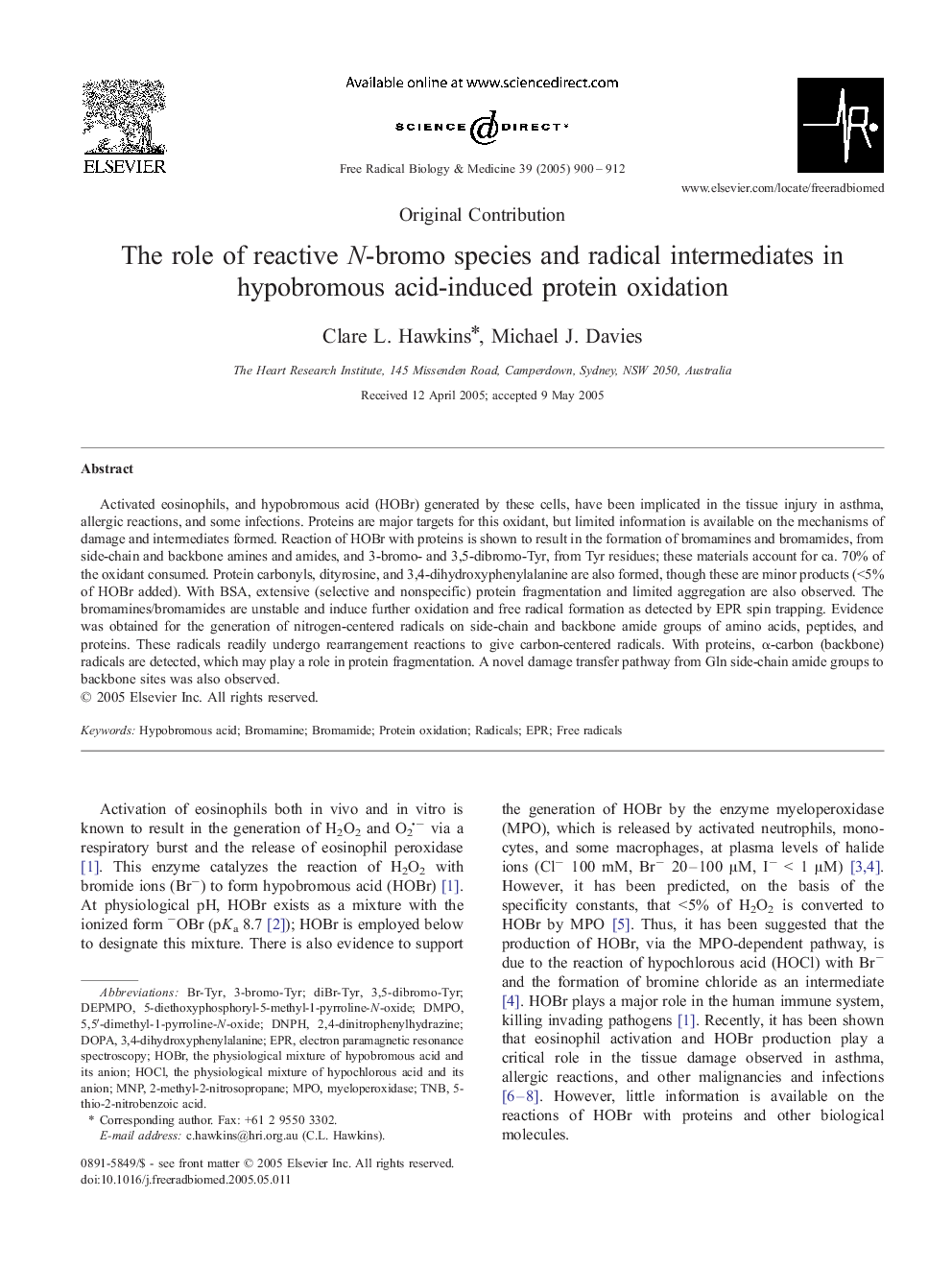| کد مقاله | کد نشریه | سال انتشار | مقاله انگلیسی | نسخه تمام متن |
|---|---|---|---|---|
| 10739019 | 1046853 | 2005 | 13 صفحه PDF | دانلود رایگان |
عنوان انگلیسی مقاله ISI
The role of reactive N-bromo species and radical intermediates in hypobromous acid-induced protein oxidation
دانلود مقاله + سفارش ترجمه
دانلود مقاله ISI انگلیسی
رایگان برای ایرانیان
کلمات کلیدی
5,5′-dimethyl-1-pyrroline-N-oxide5-diethoxyphosphoryl-5-methyl-1-pyrroline-N-oxideHOBrDNPHDOPADEPMPOHOClMNPDMPOTNB2-methyl-2-nitrosopropane - 2-متیل-2-نیتریزوپروپان2,4-dinitrophenylhydrazine - 2،4-dinitrophenylhydrazine3,4-dihydroxyphenylalanine - 3،4-دی هیدروکسی فنیل آلانینMPO - DFO5-thio-2-nitrobenzoic acid - اسید 5-تیو-2-نیتربنزوئیکHypobromous acid - اسید هیپوبرمProtein oxidation - اکسیداسیون پروتئینEPR - تشدید پارامغناطیس الکترونFree radicals - رادیکال آزادRadicals - رادیکال هاelectron paramagnetic resonance spectroscopy - طیف سنجی رزونانس پارامغناطیسی الکترونmyeloperoxidase - میلوپراکسیداز
موضوعات مرتبط
علوم زیستی و بیوفناوری
بیوشیمی، ژنتیک و زیست شناسی مولکولی
سالمندی
پیش نمایش صفحه اول مقاله

چکیده انگلیسی
Activated eosinophils, and hypobromous acid (HOBr) generated by these cells, have been implicated in the tissue injury in asthma, allergic reactions, and some infections. Proteins are major targets for this oxidant, but limited information is available on the mechanisms of damage and intermediates formed. Reaction of HOBr with proteins is shown to result in the formation of bromamines and bromamides, from side-chain and backbone amines and amides, and 3-bromo- and 3,5-dibromo-Tyr, from Tyr residues; these materials account for ca. 70% of the oxidant consumed. Protein carbonyls, dityrosine, and 3,4-dihydroxyphenylalanine are also formed, though these are minor products (<5% of HOBr added). With BSA, extensive (selective and nonspecific) protein fragmentation and limited aggregation are also observed. The bromamines/bromamides are unstable and induce further oxidation and free radical formation as detected by EPR spin trapping. Evidence was obtained for the generation of nitrogen-centered radicals on side-chain and backbone amide groups of amino acids, peptides, and proteins. These radicals readily undergo rearrangement reactions to give carbon-centered radicals. With proteins, α-carbon (backbone) radicals are detected, which may play a role in protein fragmentation. A novel damage transfer pathway from Gln side-chain amide groups to backbone sites was also observed.
ناشر
Database: Elsevier - ScienceDirect (ساینس دایرکت)
Journal: Free Radical Biology and Medicine - Volume 39, Issue 7, 1 October 2005, Pages 900-912
Journal: Free Radical Biology and Medicine - Volume 39, Issue 7, 1 October 2005, Pages 900-912
نویسندگان
Clare L. Hawkins, Michael J. Davies,